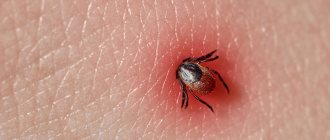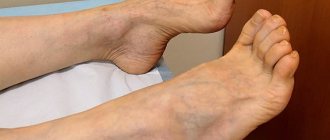Causes
Damage to the central nervous system in children can occur at the embryonic stage of development, during childbirth, and also after birth. Among the reasons are:
- Somatic diseases of the mother, taking medications, stress and bad habits during pregnancy, previous infectious diseases, pathologies of pregnancy;
- Birth injuries, immaturity of the woman’s body, pathological course of childbirth;
- Head injuries in children, neuroinfections, strokes, tumors of the brain and spinal cord.
Opening hours: 8:00 to 20:00
Telephone
Sign up
Damage to the central nervous system
Damage to the central nervous system is a neurological disease, which is based on disorders of the central nervous system, leading to diseases of other organs.
Causes and course of the disease.
There are many reasons for damage to the central system. Among them are emotional and physical overload, taking heavy medications and their side effects, taking drugs, excessive alcohol consumption, autoimmune diseases, injuries, tumors and much more. For women, the impetus for damage to the central nervous system can be a difficult and problematic childbirth, which causes a hormonal imbalance that affects the nervous system. As a result of damage to the central nervous system, the manifestation of negative human qualities occurs, deterioration of the spinal cord and brain, and the occurrence of disorders, both mental and physiological.
Lesions of the central nervous system have their own classification. There are three main types: perinatal damage, organic and neurodegenerative.
Perinatal damage to the central nervous system occurs in children under one year of age and is characterized by disruption of the structure or function of the brain. Perinatal lesions can form at different stages of fetal formation or in the first week of a child's life. In this regard, three types of perinatal damage are distinguished: antenatal (from the 28th week of pregnancy until the moment of birth), internal (during childbirth) and early neonatal - in the first week after birth.
Friends! Timely and correct treatment will ensure you a speedy recovery!
Treatment of perinatal damage to the nervous system is carried out only in a hospital with drug therapy.
An organic disorder of the central nervous system can be congenital or acquired. With an organic disorder, patients may experience the following symptoms: urinary incontinence during wakefulness, sleep disturbances, increased excitability, restlessness. In addition, coordination of movements may be impaired. Both children and adults are susceptible to organic disorders of the central nervous system.
Make an appointment right now!
Call us by phone or use the feedback form
Sign up
Neurodegenerative disorder of the central nervous system is a pathological process accompanied by dysfunction and death of nerve cells. This type of disorder includes Alzheimer's, Parkinson's and Huntington's diseases, as well as amyotrophic lateral sclerosis. Neurodegenerative disorders lead to personality destruction, memory loss, dementia and death.
Diagnosis and treatment
lesions of the central nervous system must be under the supervision of a physician.
Psychoorganic syndrome
Organic mental disorders are characterized by the mandatory presence of the so-called. psychoorganic syndrome (impaired emotions, memory and intelligence). The mood may be inappropriately increased or decreased, anxiety or a sad-angry mood may be observed. Affect (emotional manifestations) is characterized by lability (variability), explosiveness (explosiveness), flattening (insufficient depth of experience). All memory processes (memorization, storage, reproduction of information) are reduced. False memories are observed (confabulations), memory for some periods of life is completely absent (amnesia). Thinking is characterized, on the one hand, by inhibition of mental processes (torpidity), difficulty switching (rigidity), and on the other hand, by increased exhaustion. The general level of thinking decreases (concepts and ideas become impoverished), a tendency to unnecessary detail appears, and perseverations arise (“getting stuck” and constant repetition of the same thought or expression). The ability to navigate is impaired - first in the environment, and then in one’s own personality. The ability to grasp the full meaning of a situation disappears; only partial details are perceived.
The occurrence of residual organic brain damage in adults
In adulthood, signs of residual organic damage are observed less frequently, however, they are present in some patients. Often the cause of such episodes is trauma received in early childhood. At the same time, neuropsychic abnormalities are long-term consequences. Residual organic brain damage occurs for the following reasons:
- Post-traumatic illness. Regardless of when the damage to the central nervous system occurs, residual symptoms remain. These often include headaches, seizures, and mental disorders.
- Condition after surgery. This is especially true for brain tumors, which are removed using nearby nerve tissue.
- Taking drugs. Depending on the type of substance, the symptoms of residual organic damage may differ. Most often, serious disorders are observed with long-term use of opiates, cannabinoids, and synthetic drugs.
- Chronic alcoholism.
In some cases, residual organic damage to the central nervous system is observed after inflammatory diseases. These include meningitis and various types of encephalitis (bacterial, tick-borne, post-vaccination).
Syndromes with residual organic damage to the central nervous system
In neurology and psychiatry, several main syndromes are distinguished, which can occur either independently (against the background of a brain disease) or be regarded as a residual lesion of the central nervous system. In some cases, a combination of these is observed. The following signs of residual organic damage are distinguished:
- Cerebrasthenic syndrome. Its manifestations are considered to be increased fatigue, unsatisfactory mastery of the school curriculum, general weakness, tearfulness, and mood changes.
- Neurosis-like syndrome. It is characterized by the development of phobias, enuresis (uncontrollable urination at night), and motor agitation (tics).
- Hyperactivity and attention deficit disorder. It is observed in children of primary and secondary school age.
- Encephalopathy. The main manifestations are sleep disturbance, loss of memory, and perseverance. In severe cases, focal neurological symptoms and seizures are observed.
- Psychopathy. Characterized by disobedience and aggressiveness. In adulthood – mood lability, hysterical reactions, antisocial behavior.
Most often, cerebral hypoxia leads to diffuse symptoms, when the listed syndromes are combined with each other and are not very pronounced. The predominance of focal symptoms is rarely observed.
Residual organic damage to the central nervous system: treatment of pathology
Treatment of residual organic damage is aimed at strengthening the nervous system and rehabilitating a person in society. It is important to understand that the patient’s loved ones must be patient. With the right approach, treatment can significantly improve the prognosis of the disease. Nootropic, sedatives, antipsychotics, tranquilizers and psychostimulants are used as drug therapy. To improve cerebral circulation, solutions of Piracetam, Curantil, and Cerebrolysin are prescribed. Physiotherapeutic treatment, massage, and bioacoustic correction of the brain are also indicated.
Mechanism of development of central nervous system lesions
Residual damage to the central nervous system is always caused by unfavorable factors that preceded it. In most cases, the basis for the pathogenesis of such symptoms is cerebral ischemia. In children, it develops during the period of intrauterine development. Due to insufficient blood supply to the placenta, the fetus receives little oxygen. As a result, the full development of nervous tissue is disrupted, and fetopathy occurs. Significant ischemia leads to intrauterine growth retardation and the birth of a child before the gestational age. Symptoms of cerebral hypoxia can appear already in the first days and months of life. Residual organic damage to the central nervous system in adults often develops due to traumatic and infectious causes. Sometimes the pathogenesis of nervous disorders is associated with metabolic (hormonal) disorders.
Clinical picture of CNS damage
Most often, symptoms of residual organic damage to the central nervous system appear some time after exposure to an unfavorable factor. With perinatal fetal hypoxia, disturbances can be noticeable already in the first month of life. Depending on the extent of the damage, the following symptoms may be observed:
- Minor damage to nervous tissue: tearfulness, poor sleep, memory loss. At school age, a child may experience attention deficit hyperactivity disorder, a tendency to hysterical states, and phobias.
- Damage to the central nervous system of moderate severity has such manifestations as constant crying, breast refusal, convulsive syndrome, and enuresis.
- In severe cases, focal neurological symptoms are observed. This includes muscle weakness, paresis and paralysis of the limbs, delayed physical and mental development, generalized convulsions, etc.
Types of brain lesions
Brain damage can be either focal or disseminated. Let's figure out what focal brain damage is. This is a condition in which there is a clearly demarcated single focus with necrotic tissue, i.e. This is a local brain lesion. This type of damage often occurs during acute cerebrovascular accident.
Disseminated or multifocal brain damage is a type of injury in which multiple scattered foci of damage to brain tissue are detected. The multifocal form occurs in infectious diseases of the brain, for example, when an infectious agent is introduced hematogenously into the medulla or with an oncological lesion.
What is brain damage?
Organic brain damage is primarily a symptom of a disease, manifested by disruption or loss of a number of functions as a result of the pathogenic effect of some factor on brain tissue. The etiology of brain damage can be very diverse, and this will be discussed in more detail later in the article. Organic damage means that brain cells - neurons - are exposed to a variety of influences, which lead to the formation of dystrophic processes inside neurons and disrupt their functional activity. In the most serious cases, neurons simply undergo first necrobiosis and then necrosis, i.e. are dying. The death of a large number of neurons localized in a single anatomical space leads to the loss of one or another function in the body of the affected person, and the identification of a disturbed function allows specialists to understand in which part of the brain the catastrophe occurred - this is called topical diagnostics. Symptoms of organic brain damage in children manifest themselves differently than in adults, since the full activity of the higher nervous system has not yet been formed. Children may experience delays in mental, mental and physical development, unstable mood and behavioral abnormalities.
Pathogenetic mechanisms of neuronal damage
A number of mechanisms of different nature can lead to organic damage to the brain. This pathological condition can be provoked by both external and internal factors, and this must be taken into account, since therapeutic measures, depending on the pathogenetic type of development of damage to brain neurons, will differ radically.
Violation of energy supply
The most common pathogenetic variant of brain damage is associated with an imbalance between the need of neurons for energy and its entry into the cell. Energy deficiency can develop due to insufficiency:
- Nutrients in the victim's body, for example as a result of hypoglycemia, when there is not enough glucose in the blood;
- Oxygen, which causes a condition such as hypoxia. Brain hypoxia causes damage to nervous tissue and often occurs in acute ischemic or hemorrhagic cerebrovascular accidents. In children, brain hypoxia can develop in the antenotal period and during childbirth, which leads to anoxic brain damage in the child.
- When the concentration of potassium, calcium, sodium and chlorine ions increases or, conversely, excessively decreases, transmembrane proteins may malfunction, which also entails energy deficiency inside the cell.
It is worth noting that energy deficiency leads to rapidly progressive damage to brain tissue and within 5-7 minutes, in the absence of sufficient oxygenation, neurons begin to experience acute hypoxia and die. Damage to the blood vessels of the brain has the following symptoms:
- The patient notes memory impairment;
- There is a decrease in vision and hearing;
- The synthetic activity of the brain slows down;
- When performing angiography of cerebral vessels, multiple stenoses of cerebral vessels can be detected;
- MRI of the brain shows dystrophic disorders and a decrease in the volume of the cerebral cortex.
All of the above symptoms are signs of systemic atherosclerosis, which affects most older people. Atherosclerosis leads to the formation of discirculatory encephalopathy.
Traumatic injuries
Injuries are always associated with mechanical damage to the brain and the subsequent development of edema, which leads to an increase in intracranial pressure. Since the brain is located in the cranium and literally floats in the cerebrospinal fluid - intracerebral fluid, the consequences of blows and bruises become serious. Despite. The cerebrospinal fluid plays a protective and shock-absorbing role; with the development of a brain contusion, an increase in intracranial pressure occurs, since the fluid is not physically compressible. Brain cells are exposed to excessive pressure and begin to die. Brain tissues occupy up to 96% of the volume of the cranial cavity, which makes this organ very sensitive to changes in intracranial pressure.
It is very important to note that quite often injuries are accompanied by internal hemorrhage, which can lead to the formation of an extensive hematoma and displacement of the brain. Dislocation of the brain leads to wedging of its subcortical structures into the foramen magnum, which inevitably leads to the death of neurons located in the nuclei of the vasomotor and respiratory centers, without which the life of the victim is impossible.
Infectious
Brain damage can be caused not only by physical factors. But also biological. Conditions such as meningitis, encephalitis, and ventriculitis can significantly impair the functional activity of the brain.
- Meningitis is an inflammation of the lining of the brain. Etiological factors can be very diverse, so the brain can be affected by many bacterial and viral diseases. Inflammation of the membranes of the brain can occur primarily through direct infection through the wound gate. And secondarily – as a result of an immunodeficiency state.
- Encephalitis is inflammation of the brain tissue itself. Encephalitis is an even more severe infectious disease than meningitis. As a result of encephalitis, purulent melting and liquefaction of areas of the brain can occur, which leads to the formation of persistent disturbances in the functioning of various organs of the victim. With encephalitis, brain damage very often leads to disability or even death.
- Ventriculitis is an inflammation of the integumentary tissues lining the ventricles of the brain. This disease occurs in newborns and infants and leads to increased intracranial pressure and the development of hydrocephalus due to insufficient drainage function of the cerebrospinal fluid.
The brain can be affected by both specific and nonspecific infectious agents; this is important to consider when prescribing treatment, since antibacterial therapy regimens will vary.
Congenital pathology
Anomalies of brain development can form in the very early stages of a child’s development. The first trimester of pregnancy is the most dangerous for the woman and the fetus, since the pregnant woman’s body and the fetus are unprotected from external factors, and at the time of the initiation and formation of organs, the most dangerous anomalies and gross developmental pathologies can form, for example micro or acephaly.
Toxic damage
Not the most common type of brain damage, but nevertheless it does occur. Brain damage occurs if the chemical has neurotoxic properties and is able to cross the blood-brain barrier. Neurotoxic agents lead to organic damage in various parts of the nerve cell; most often, neurons suffer from disruption of the transmembrane transfer of nutrients and disturbances in the synthesis of neurotransmitters. Toxic injuries of varying severity can lead to both persistent encephalopathy and complete loss of some functions of the person affected by intoxication. Most often, gross organic damage to the brain is caused by substances such as arsenic and nitrogen metabolism products, with excessive accumulation of the latter in the blood plasma.
Oncological diseases
Brain damage in oncology can be primary. When a tumor develops directly from brain tissue or secondary - when atypical tumor cells are metastatically introduced into the brain.









